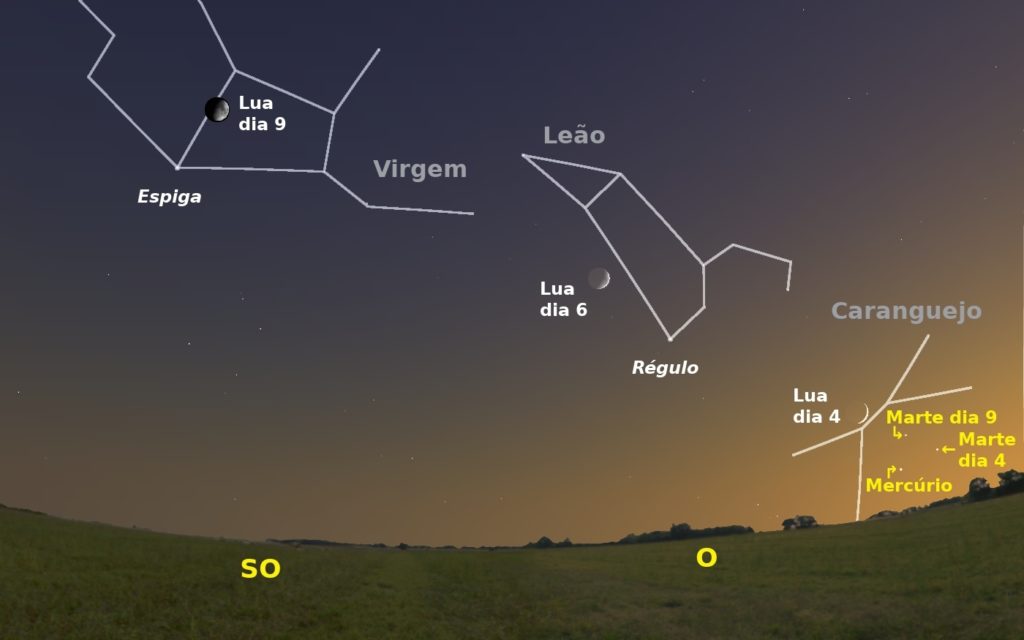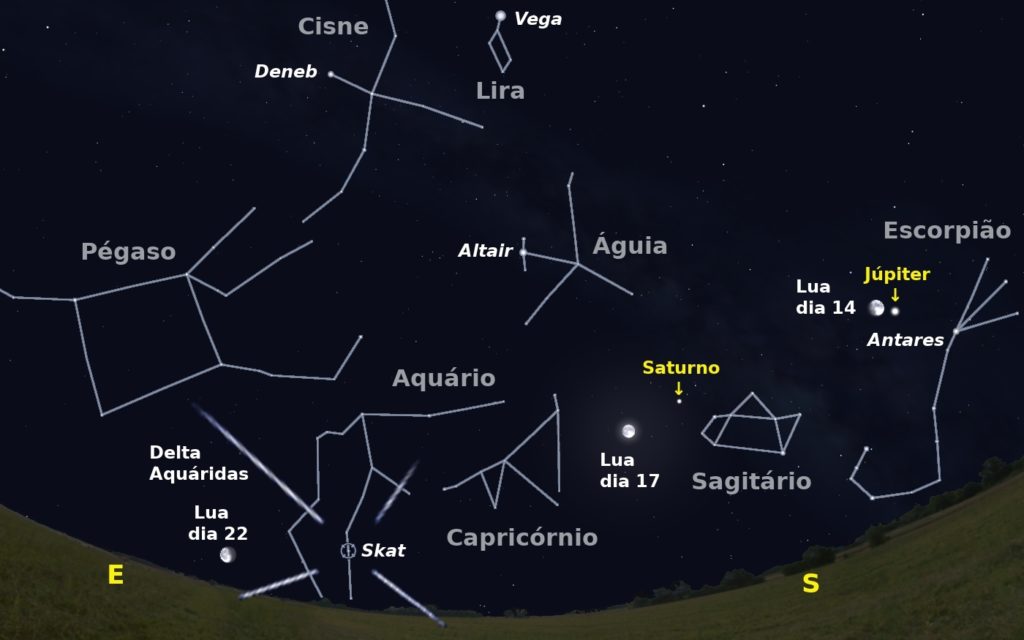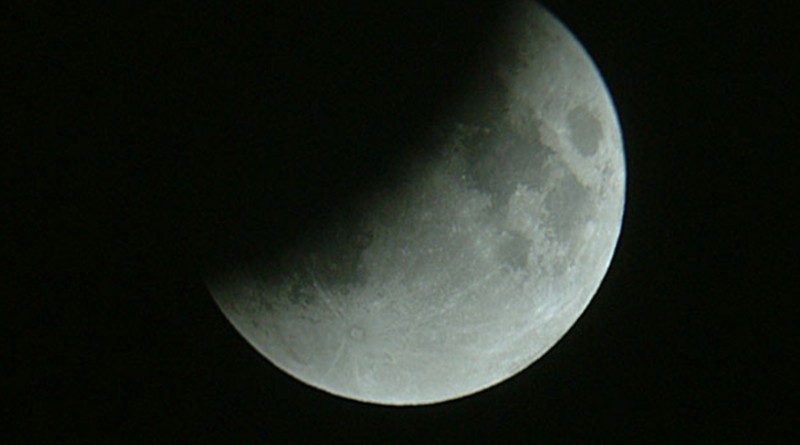The New Moon is the first relevant astronomical ephemeris of the month, occurring at the end of the second afternoon of July. The interposition of the Moon between the Sun and Earth will cause a total solar eclipse, which will only be fully appreciated along a narrow band that extends from northern Argentina and Chile to the southern Pacific Ocean.
At dusk on the 4th, the Moon will be seen in the constellation Cancer, along with the planets Mercury and Mars. This event marks the arrival of the Earth at its aphelion (point of the orbit furthest from the Sun) in the following dawn. But as the Earth's northern hemisphere is facing the Sun these days, in this part of the globe the Sun seems higher, and brighter, than it did six months ago.
The closest approximation between Mercury and Mars will be on day 6, about 4 degrees apart (a little less than three fingers' width seen with outstretched arm). Mercury will be the leftmost planet and the brightest of the two.
These stars will be visible in the first fortnight of the month, after which they will be overshadowed by the Sun. That night, the Moon will be beside Regulus, a quadruple star system located 79 light-years from us, which we associate with the heart of the constellation Leo .
On the crescent of day 9, the planet Saturn will be in opposition, ie the position diametrically opposite to the Sun. This is the period when we are closest to this planet and when we see it fully illuminated.

On the night of the 13th to the 14th, the Moon will be seen beside Jupiter, while at dawn on the 16th it will already be at the foot of Saturn
Because it occurs close to the Earth's orbit plane, the Full Moon on the 16th will give rise to a lunar eclipse. This will only be partial, as the terrestrial umbra (the darkest part of the shadow) will only partially cover the Moon.
This event will start at 19 hours and 42 minutes (mainland time), reaching the maximum at 22 hours and a half, and ending at 1 hour and 20 minutes in the morning.
The waning quarter will arrive at dawn on the 21st, next to the Aquarius constellation.

At dawn on the 28th, the Moon will rise alongside Aldebarã, the eye of the constellation Taurus. This ephemeris coincides with the peak activity of the shower of Delta Aquarid stars, meteors that seem to radiate from the Delta star of the constellation Aquarius (or Skat). It is not known for sure which comet gave rise to this shower of stars, the main suspect being comet 97P Macholz.
The best time to observe this event will be around 3:XNUMX in the morning. This shower of stars is not very intense, having, at the peak of activity, and under ideal observation conditions, between one to two dozen meteors per hour. However, these stars can be seen from the first weekend of July to the third week of August.
The reappearance of Mercury at dawn on the 30th marks the end of another month of astronomical observations.
This month, three stars will occupy the highest position in the sky in the middle of the night; Vega, Deneb and Altair, belonging respectively to the constellations of Lira, Swan and Eagle. These are the vertices of the famous Summer Triangle.
Good remarks!
Author Fernando JG Pinheiro (CITEUC)
Science in the Regional Press – Ciência Viva



















Comments